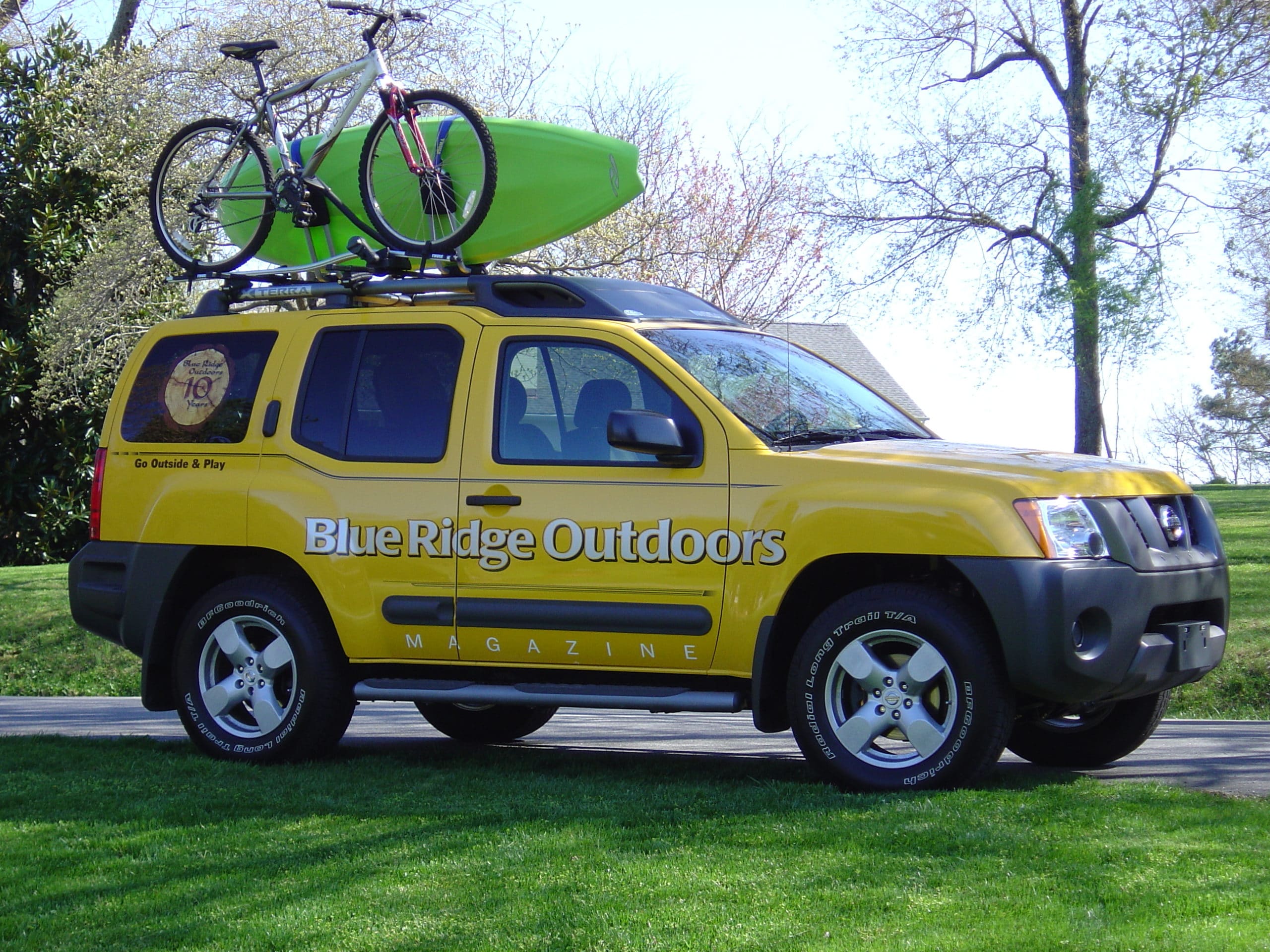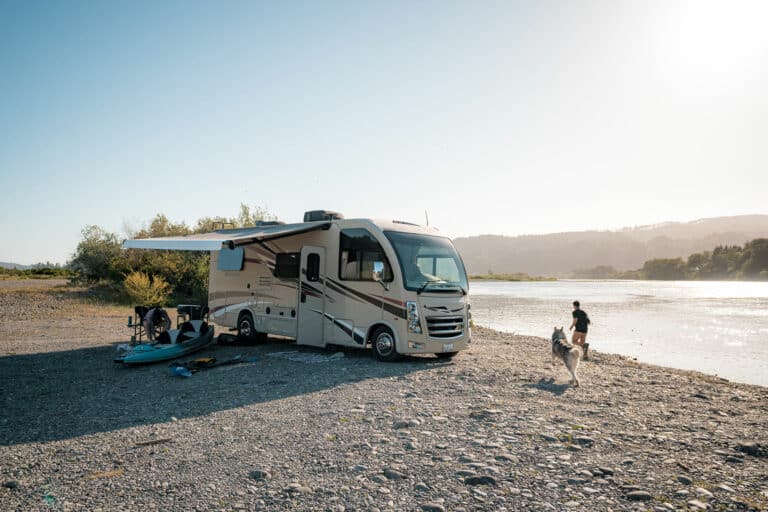A timeline of highlights from a quarter-century of covering adventure.
1995
The First Issue
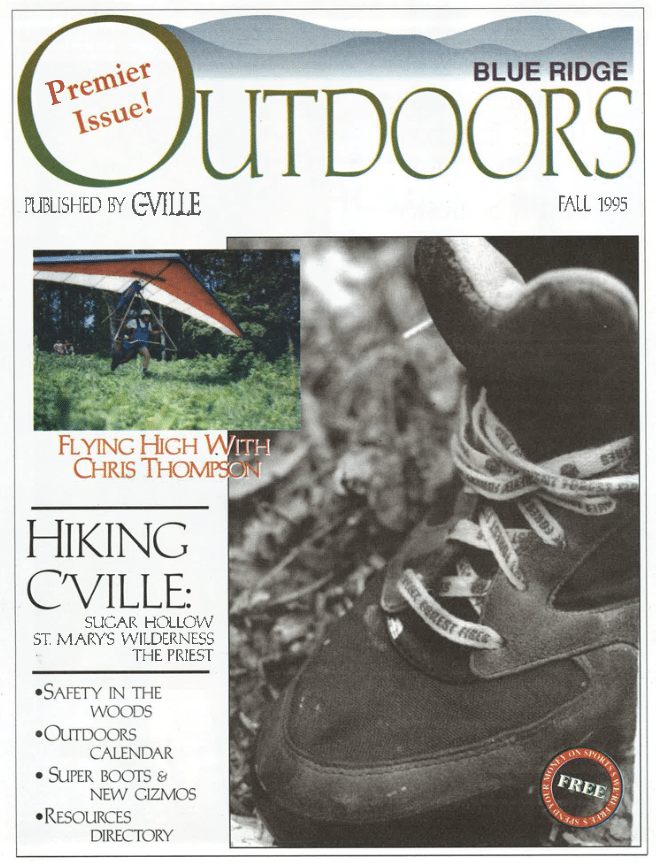
The first issue of Blue Ridge Outdoors is published as an insert in C-Ville Weekly in the fall of 1995. Highlights included coverage of hiking destinations in Virginia and “New Gizmos” like the Magellan Trailblazer, a handheld GPS device that retailed for $600.
In his editor’s note, John Blackburn declared: “Ecosports are here to stay.” He went on to say that the quarterly magazine’s mission would be to motivate readers to explore the outdoors: “And starting with this issue we will nudge you every three months or so. So look for Blue Ridge Outdoors, your source for what’s happening—and for what you can do—out there.”
1996
Silver in Atlanta
U.S. paddler Dana Chladek wins a silver medal in the women’s K-1 slalom competition in canoeing at the Summer Olympics in Atlanta. She’s now a coach at the Potomac Whitewater Racing Center in Maryland.
Forgotten Boat
In BRO’s summer issue, which focused on paddling in the Virginias, writer Mackenzie Brown reviews the New Wave Mongoose, calling it “a remarkably stable boat that handles great virtually the minute you dip your paddle in the water.”
The cult classic among creek boaters, which is no longer produced, was partially designed by Appalachian squirt boat pioneer and kayak visionary Jim Snyder.
1997
Phat Boards
In the winter issue Duane Brown writes the cover story “White Hills, Phat Boards: Snowboarding the Virginias.” The intro to the piece on the emerging sport and best local slopes states: “So you’ve finally made the move to the modern way of thinking. After seeing it on your ski trips out West for the last 10 years and maybe catching a flash of it on MTV sports, you’ve finally gone and bought your first snowboard.”
Race Goodies
“I had an arsenal of food prepared: Luigi’s pizza, a 24 pack of Krispy Kreme doughnuts, Snickers bars, Oatmeal Cream Pies, Dr. Pepper, Mountain Dew, and of course Power Bars, Cliff Bars, and Cytomax. It was hard keeping other riders out of my pile of goodies.” —Trek-sponsored cyclist Chris Scott of Harrisonburg, Va., after being asked by former BRO editor Jeb Tilly what he consumed during the 24 Hours of Canaan endurance mountain biking race.
1998
Forest Whiners
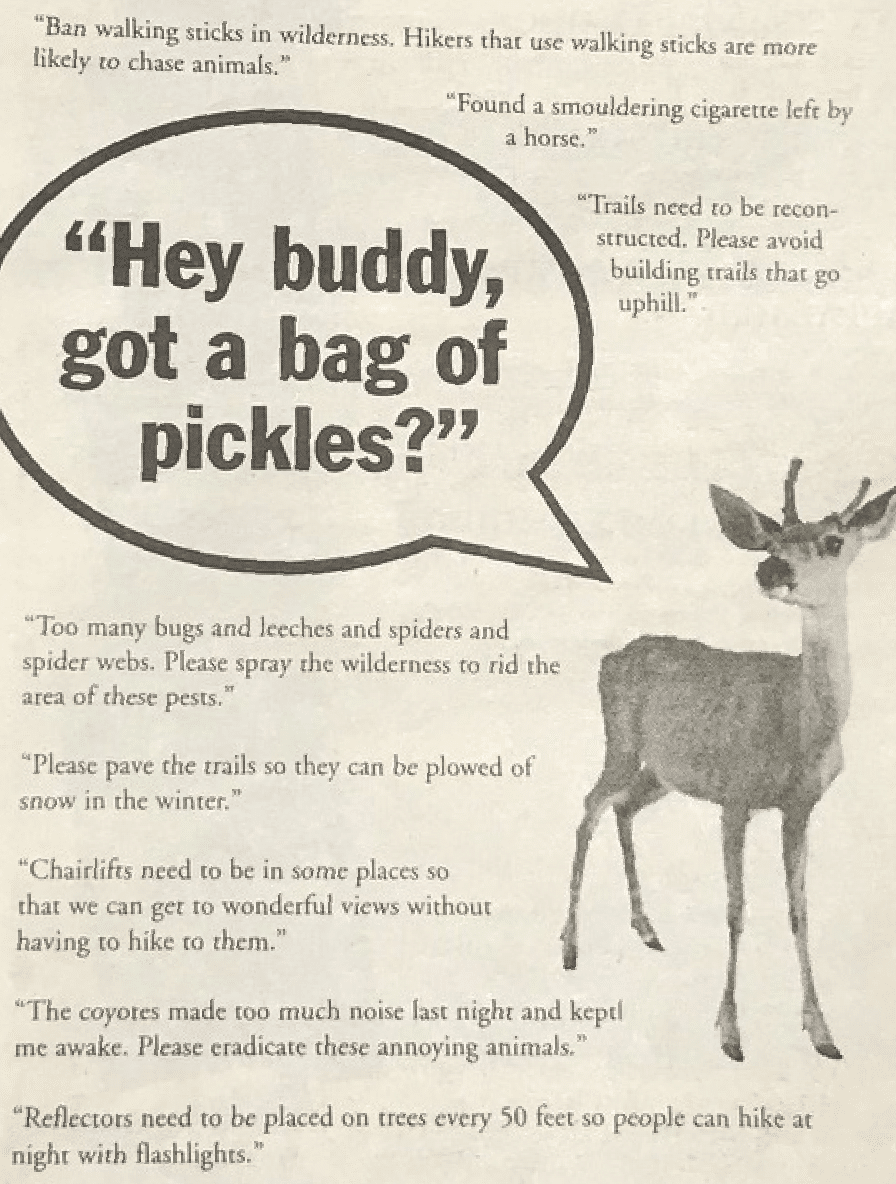
Blue Ridge Outdoors becomes a monthly magazine. In the March issue editors get a hold of some actual comments left on Forest Service registration sheets and comments cards left by backpackers and publishes a story called “Whiners of the Forest.” Some gems include: “Please avoid building trails that go uphill”; “Too many rocks in the mountains”; and “A small deer came into my camp and stole my bag of pickles. Is there a way I can get reimbursed? Please call.”
1999
Cycling’s Dirty Little Secret
“There is a dirty little secret that the cycling community doesn’t like to talk about—chafing! The cure? Get a good diaper rash medicine and slather generously. And another secret insider tip: Dare to wear no underwear.” —Nancy Sorrells, in the May cover story called “Grease, Tattoos, & Diaper Rash,” which documents her 370-mile ride on the Virginia portion of the TransAmerica Trail.
State Sponsored
The West Virginia Division of Tourism sponsors pro mountain biker Sue Haywood, a champion racer who hails from the fat tire mecca of Davis. In the April issue, BRO declares: “It’s a good move by the state, and a good move for Haywood, as long as she doesn’t have to belt out ‘Country Roads’ every time she crosses the finish line.”
2000
Rocking the New
In the August issue, author and photographer Carl Samples writes an in-depth cover story documenting the history of rock climbing at West Virginia’s New River Gorge. Before the New became a famous destination, known for its variety of challenging sandstone routes, Samples started visiting the Gorge in the early 80s and recounted the experience: “The New offered delicious obscurity; to be a climber here was to enjoy the thrill of the unknown, to share accomplishments with only a small circle of fellow climbers. The Gorge itself sheltered us within the dense forest, its cliffs tucked mysteriously away from the rest of the world.”
Barefoot on the A.T.
Susan and Lucy Letcher, known as the Barefoot Sisters, complete a thru-hike of the Appalachian Trail from Maine to Georgia, sans shoes. The next year they turn around and complete a northbound hike of the entire A.T. Both experiences are recounted in two books, Southbound and Walking Home.
2001
Bridge Day Bummer
In the January issue BRO runs a dramatic full-page photo of rappelers coming down from the 876-foot New River Gorge Bridge, taken during the annual Bridge Day festival in October of the previous year. Ten months later the event is cancelled for the first time due to post-9/11 security concerns.
2002
Wheelie Funny
Cycling columnist Timothy Richard Sherman made us laugh for many years with his goofball takes on bike culture. In the July issue he pens an ode to the joys of riding on one wheel called “How to be wheelie cool.” In the column he declares: “If you were to travel the globe in search of one bike maneuver recognized by all cultures, you would undoubtedly find the wheelie is still king. You might ask why someone would so desperately want to ride on the rear wheel alone, and all I can say is that wheelies make the soul smile.”
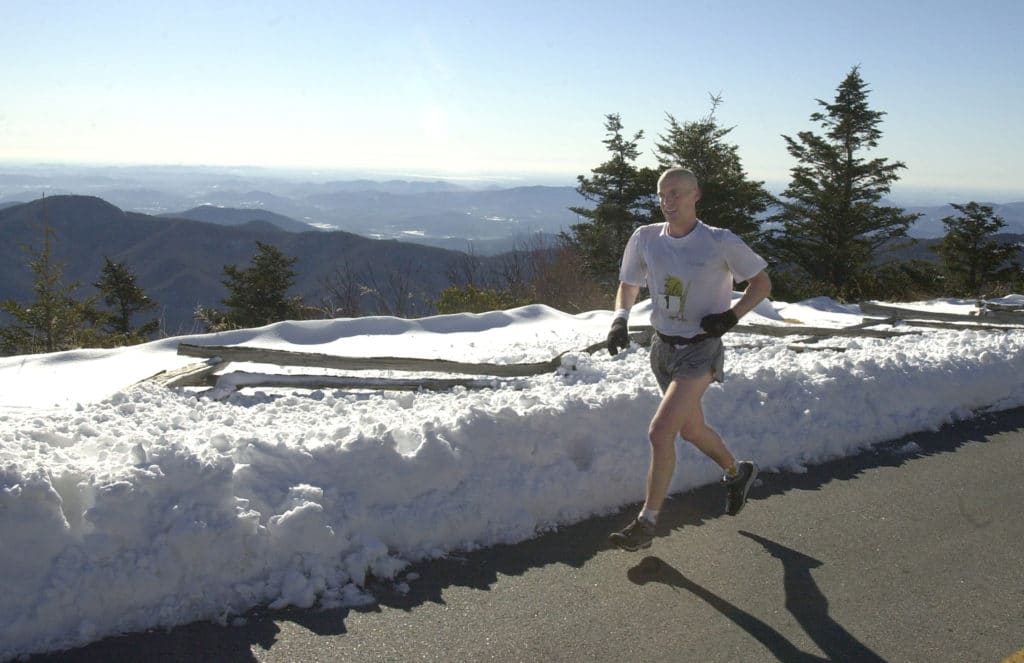
2003
Where There’s a Will
BRO editor Will Harlan completes a 72-mile run of the Appalachian Trail through the Smokies to raise awareness for the region’s chronic air pollution. After suffering what was determined by doctors to be a pollution-induced asthma attack during the run, Harlan testified as a witness for the state of North Carolina in a lawsuit against the TVA, which ultimately resulted in the authority being forced to spend more than $1 billion upgrading emissions controls on 14 coal-fired power plants.
Before the Fall
Newly hired staff writer Jedd Ferris (BRO’s current editor-in-chief) interviews professional cyclist George Hincapie, a Greenville, S.C., resident, following Lance Armstrong’s fifth Tour de France win. “During the Tour we all ride for Lance to win the overall,” said Hincapie, a supportive teammate of Armstrong on the US Postal Service cycling team. “We all commit to one thing and that’s really the only way to do it. People were questioning our team, but this year we showed that we were the strongest team in the race by far.”
Hincapie admitted to using performance-enhancing drugs in 2012, and Armstrong, who was stripped of all seven of his Tour de France titles, did the same in a televised interview with Oprah Winfrey in 2013.
Best of the Blue Ridge
The first annual Best of the Blue Ridge Readers’ Choice Awards are published in December. Notable winners include West Virginia’s Cranberry Wilderness as the Most Likely Spot to Get Lost, North Carolina’s Max Patch Bald as the Best Place to Sleep Under the Stars, mountain unicycling as the Best New Extreme Sport, and a Walkman as the Most Unnecessary Piece of Gear.
2004
Skirting the Trail
In the June issue, Leanna Joyner writes an empowering essay, “Skirting the Trail,” based on her choice to thru-hike the Appalachian Trail in a skirt. Of her experience: “I got a lot of odd looks from people and was asked to explain myself through that squinted eyeball of scrutiny as someone looked from my mud covered boots, up my sinewy legs, to the skirt.
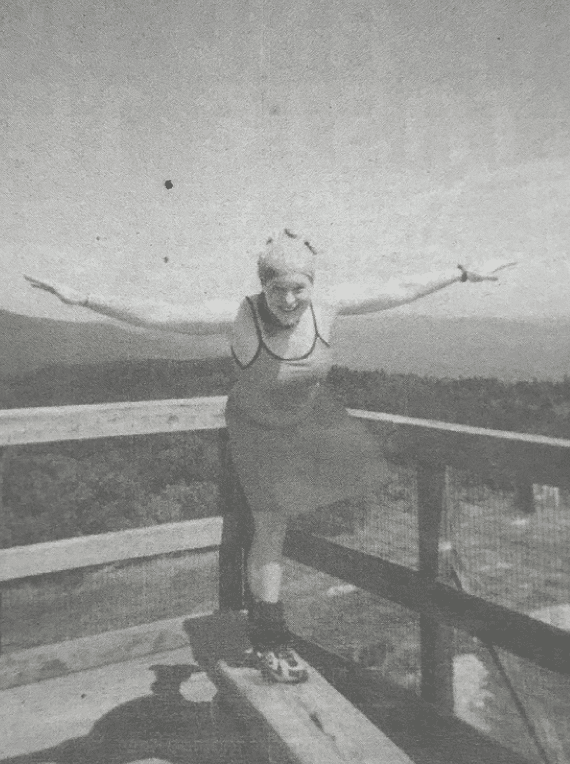
“I wasn’t the only woman on the trail, but what I found was that I became a spokesperson for women on the trail, perhaps because of my chosen attire. I answered all kinds of questions: ‘Yes, I’m hiking alone.’ ‘No, I’ve never felt threatened by anyone on the trail.’
“As my journey evolved, so did I. Initially I may have been a woman hiking the trail, but for the last 1,000 miles, I was a hiker hiking the trail. I knew that for every challenge I faced, others faced it, too. I set out to prove that women could hike the trail in a skirt, and so they can, but not all women will. Not all men will either. It is fortitude of mind and soul. It is the individual journey that takes us places. What we choose to wear is insubstantial.”
Bon Jovi to the Rescue
When elite mountain biking squad Team West Virginia finds itself without a sponsor, the squad is rescued by an unlikely benefaactor, rock singer Jon Bon Jovi. The connection comes via team director Steve Thaxton, who is also Bon Jovi’s chiropractor and personal trainer. The crew of world-class riders officially becomes Team West Virginia Bon Jovi.
2005
Lack of Diversity
Longtime staff editor Graham Averill writes a story called “Minority Report” in the July issue, asking the question, “Where is the multiculturalism in mountain sports?” In the piece, Greg Masterson, then president of the Metro Atlanta Cycling Club, starkly puts the lack of diversity in the outdoors in perspective: “When I go out to a race, there are 60 guys lining up, and I’m the only black guy there.”
From the Blue Ridge to Bonnaroo
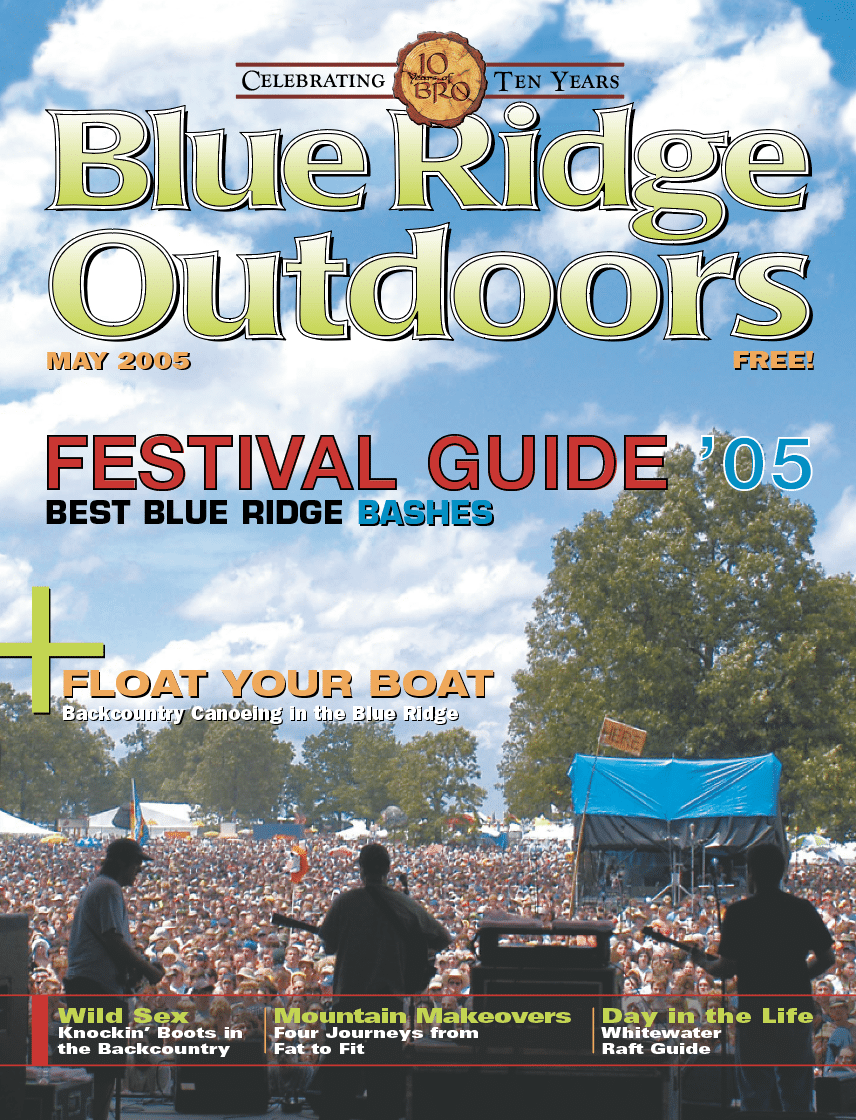
BRO debuts its first annual Festival Guide, including what would become beloved mainstay region events like FloydFest, and featuring a cover image of Yonder Mountain String Band on stage at the Bonnaroo Music and Arts Festival. With the explosion of outdoor music festivals in subsequent years, the guide continued to expand and was published every year until 2020, when the live music industry was thwarted by the coronavirus pandemic. We’re hopeful it will return in 2021.
Southern Fried Gear Guide
BRO puts a greasy title on this expansive look at “gear best suited for the Southern Appalachian terrain” that covers equipment for a range of sports from climbing and paddling to trail running and hiking. Included are many long-gone favorites like a Montrail Blue Ridge GTX, a rugged trail boot made by a company eventually acquired by much bigger brand Columbia.
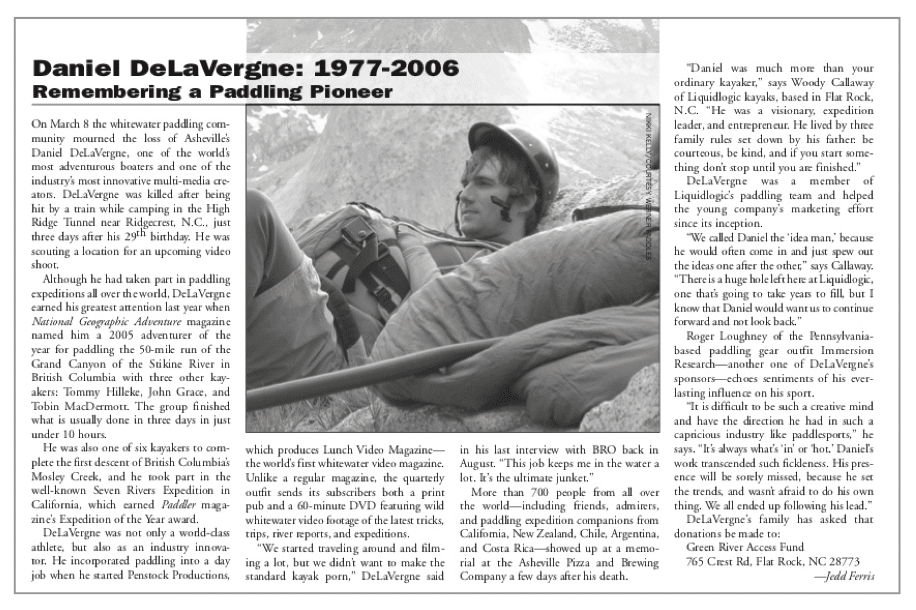
2006
Tragedy
Just three days after his 29th birthday, whitewater boater and adventure documentarian Daniel DeLaVergne is killed after being hit by a train while camping in the High Ridge Tunnel near Ridgecrest, N.C. He had been scouting a location for an upcoming video shoot. The previous year DeLaVergne, a fearless kayaker, had been named an adventurer of the year by National Geographic for paddling the 50-mile run of the Grand Canyon of the Stikine River in British Columbia. Daniel was much more than your ordinary kayaker,” Woody Callaway of Liquidlogic said in the May issue. “He was a visionary, expedition leader, and entrepreneur.”
2007
That’s a Lot of Trails
BRO enlists reader feedback and in the November issue publishes a ranked list of the Southeast’s top 100 trails. Winners include Virginia’s Three Ridges Loop as the region’s Hardest Day Hike, the Art Loeb Trail in North Carolina as the Best Long Trail, and the Greenbrier River Trail in West Virginia as the Best Rail Trail.
Marathon Before Breakfast
“When I’m home I get up around 4:00 a.m. and run a marathon before fixing breakfast and taking the kids to school.” —Ultramarathon Man Dean Karnazes in an interview in the August issue, discussing how he balances family life and training. The previous year Karnazes ran 50 marathons in 50 states in 50 consecutive days.
2008
Start ’em Young
BRO starts the year by publishing its first Outdoor Family Guide in the January issue. In an effort to help parents get their kids into the wild, the guide features expert tips in hiking, paddling, and climbing, as well as family-friendly destinations and gear that’s right for little ones.
2009
Back to the Land
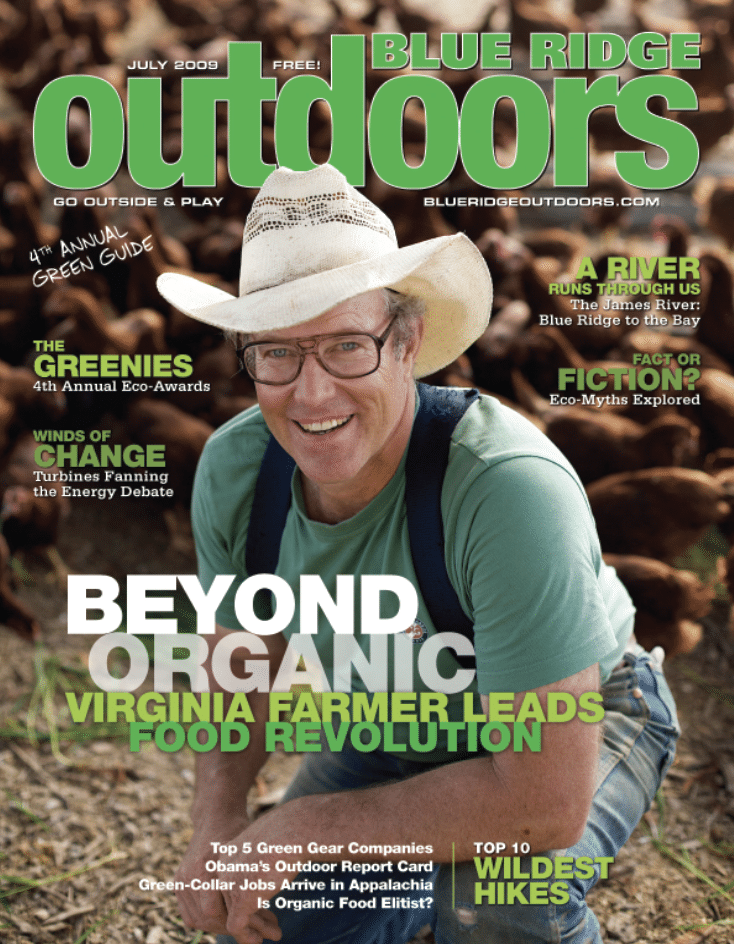
Will Harlan travels deep into the North Carolina mountains to interview Eustace Conway at his remote Turtle Island Preserve near Boone. In an extensive profile in the April issue, Conway—who appeared on the reality TV series Mountain Men and was also the subject of Elizabeth Gilbert’s best-selling biography The Last American Man—candidly laments American overconsumption and shares advice on connecting with the natural world: “The best way to understand nature is to be involved with it—touch it, smell it, be moved by it physically, emotionally, spiritually.”
A few months later, Jedd Ferris and photographer Tom Daly visit Joel Salatin’s Virginia-based Polyface Farm for an interview and cover shoot. Salatin, who became well known after appearing in Michael Pollan’s The Omnivore’s Dilemma and the documentary Food, Inc., offers a transparent look at his sustainable farming practices and decries the country’s industrial food system. In the July issue cover story, Salatin rails against the government regulations that make it difficult for small family farmers to thrive. “The market is there, but the only reason we don’t have a more viable local food system is because of malicious, capricious regulations that put undue burdens on small producers and give big producers a free pass.”
Doc’s Wise Words
In the April issue, Doc Watson, who passed away in 2012, gives BRO an interview to preview his annual Merlefest, the roots music festival that draws 80,000 people to Wilkesboro, N.C. The flat-picking legend and longtime resident of nearby Deep Gap states, “I like the quietness of being out in the country. It’s peaceful and the air is cleaner. The only shame is the spray they use at the Christmas tree farms. It seeps down into the earth and gets in the water table. You need to have a well that goes below the water table.”
Win for Wilderness
President Barack Obama signs the Omnibus Land Management Act, creating more than 1.6 million acres of Wilderness throughout the United States, including 43,000 acres in Virginia and 37,000 acres in West Virginia.
2010
First Descent
In August, Whitewater ace Pat Keller makes a first descent of North Carolina’s Linville Falls, a triple-tiered waterfall that was long viewed as not runnable by some of the region’s most experienced kayakers. Describing the landing of the epic, 90-foot plunge, Keller, 24 at the time of the feat, said, “Although the hit was large, and my ribs were a bit bruised from the water’s impact, I was stoked.”
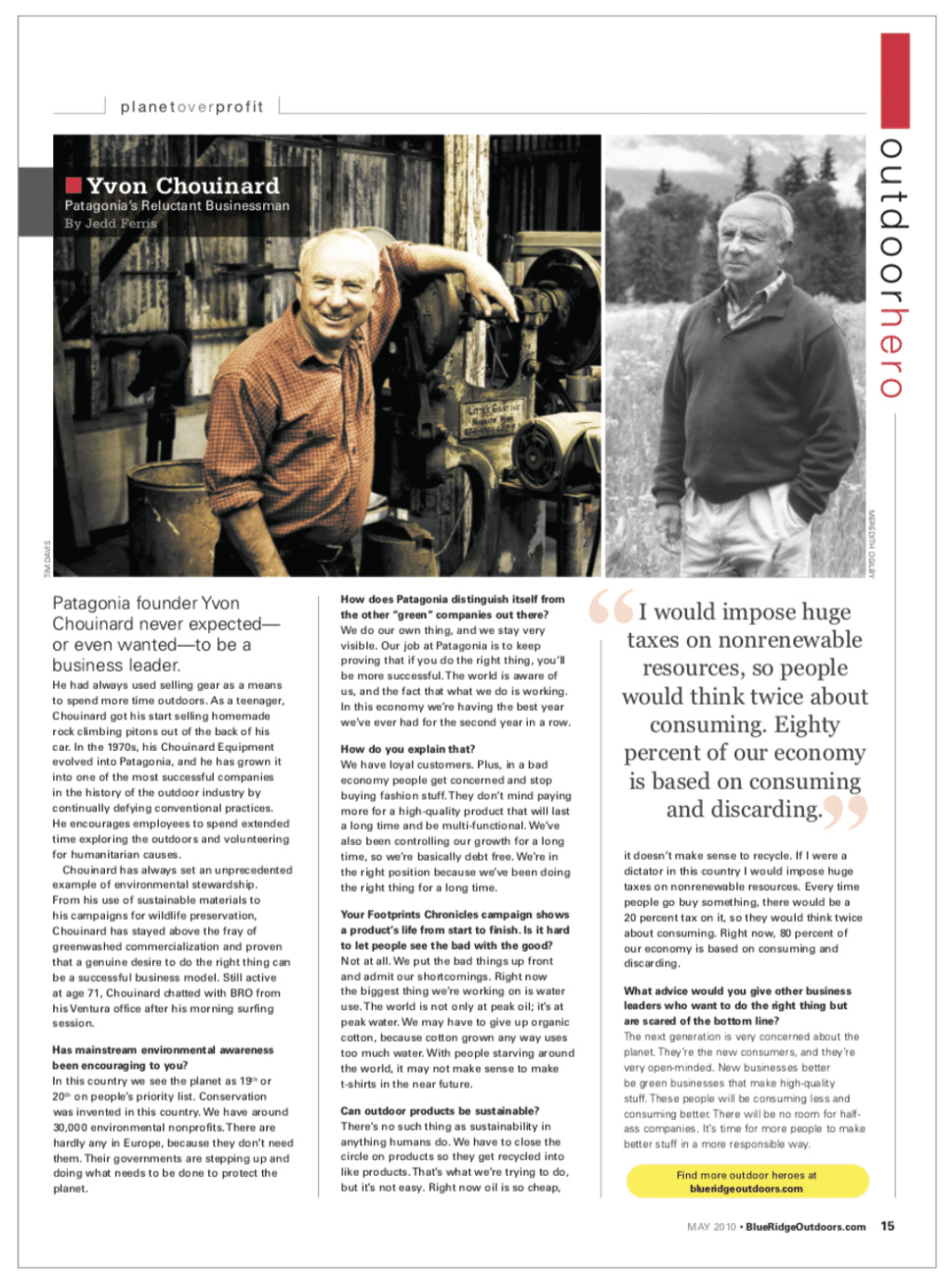
Patagonia’s Reluctant Businessman
Patagonia founder Yvon Chouinard grants BRO an interview, and in the May issue shares why he’s more concerned about the planet than his own bottom line: “There’s no such thing as sustainability in anything humans do. We have to close the circle on products so they get recycled into like products. That’s what we’re trying to do, but it’s not easy. Oil is so cheap, it doesn’t make sense to recycle. If I were a dictator in this country I would impose huge taxes on nonrenewable resources. Every time people go buy something, there would be a 20 percent tax on it, so they would think twice about consuming.”
Thats So Soft-Core
In a heartfelt essay in the April issue called “Proud to Be Soft-Core: Outdoor Adventure Doesn’t Have to Hurt,” contributor Lauren Ellermen reminds readers that while it’s understandable to be in awe of hard-core athletes, less intense exploration of the outdoors is rewarding, too. She writes: “And while they are busy training hard and pushing themselves to extremes, I’ll be leisurely strolling down the trail with my dogs, enjoying the sights, scents, and sounds of the larger world around us.”
2011
Speed Record Tribute
Jennifer Pharr Davis sets a speed record for a supported thru-hike of the Appalachian Trail in 46 days, 11 hours, and 20 minutes. In the December issue she pens a moving essay recounting the effort, giving much of the credit to her husband, Brew, for his support on the trail, and dedicating the accomplishment to the memory of Meredith Emerson, a 24-year-old woman abducted on Georgia’s Blood Mountain and murdered by serial killer Gary Michael Hilton. Writes Davis: “I wanted to honor her memory by living fully—and by hiking.”
2012
Trail Tour of Virginia
Ultrarunners Anne Lundblad, Troy Shellhammer, and Eric Grossman complete the Tour of Virginia—a 550-mile, 14-day trek across the state on the Appalachian Trail. In the October issue, Grossman writes, “The tour was ultimately a test of survival. The A.T. is about as wild as we can readily get: each of us spent most of our days readily immersed in the lushness of blossoming azaleas and the musk of large mammals.
Turning 95 on the New
Meyer Melman celebrates his 95th birthday with a whitewater rafting trip on West Virginia’s New River. Industry veteran Dave Arnold of Adventures on the Gorge believes he’s the oldest rafter his guides have ever taken down the class II-IV lower stretch of the New.
Phunhogs at Fests
In the May Festival Guide, Peter Kray, longtime columnist for BRO’s sister publication Elevation Outdoors, writes a hilarious piece called “Fans, Freaks, & Funhogs” about people-watching at concerts. Among the many types of music fans he observes is the Privately Funded Phunhog: “AKA the Trustfunder is as common a sight at summer concerts as white guys with dreadlocks wearing skirts. Which, of course, is how to tell you’re in the presence of a PFPer—that and the fact that he’s selling handmade jewelry out of his mom’s Land Rover, with a Save Tibet sticker next to the country club parking permit on the back.”
2013
The Next A.T.
Joanna Swanson and Bart Houck, AKA Someday and Hillbilly Bart, become the first thru-hikers of the 1,600-mile long Great Eastern Trail, which stretches from Flag Mountain, Alabama, to the Finger Lakes of New York. Unlike the social scene that develops among Appalachian Trail thru-hikers, Swanson and Houck were alone during their five-month hike. “It’s a lot to handle, being with one person for five months,” Swanson told BRO in the October issue.
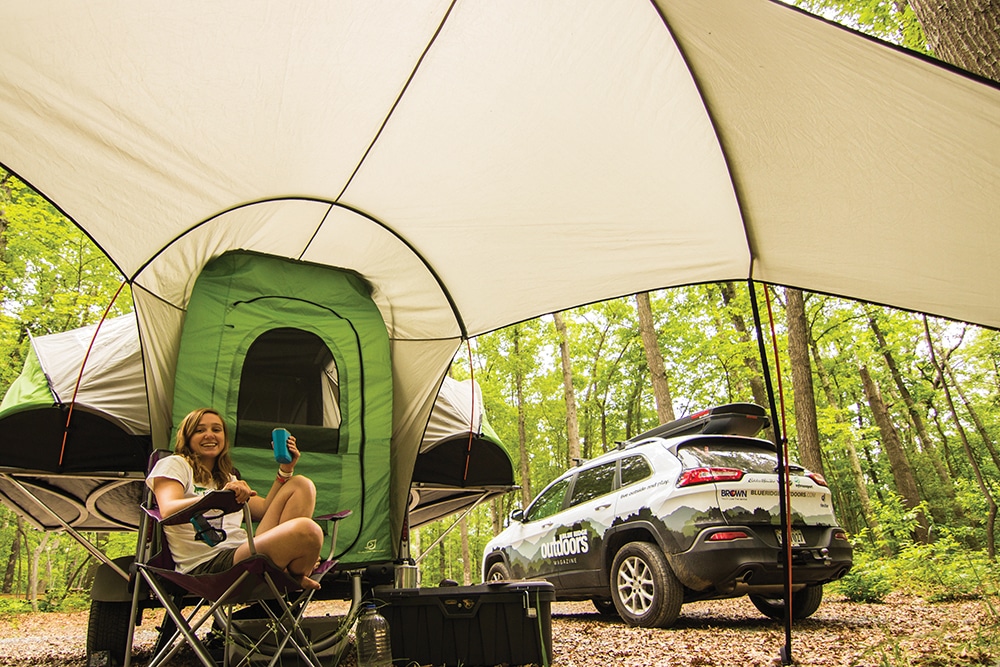
2014
Live Outside and Play
Travel Editor Jess Daddio launches the Live Outside and Play program, becoming the magazine’s first staff editor to live on the road and file stories from remote locations around the region. To mark the 50th anniversary of Wilderness, Daddio spends a humbling 24 hours in West Virginia’s isolated Cranberry Wilderness, bushwhacking, hiking unmarked trails, and running into bears. In the October issue she writes: “After a moment the magic of the wilderness opened up. The outlines of shoulder-high ferns and dense stands of spruce came into focus. Wildflowers and blooming rhododendron popped against lush shades of green. The forest smelled sweetly of pinesap. Birds of unknown origin chirped and twitted above. This is what they write in fairytales.”
How To: Date a Kayaker
One of the magazine’s most popular stories of all time is written by Ashley Woodring, who humorously shares the quirks and sacrifices of dating pro paddler Chris Gragtmans—a longtime BRO contributor. In addition to subsisting on burritos and PBR and inadvertently becoming an expert on the rocker profiles of Dagger boats, Woodring also says the key to dating a kayaker is setting communications expectations, sometimes out of literal necessity. “It’s often difficult to get in touch with the boys when they are kayaking. Whether in deep river gorges with no cell service, or getting lost on gravel roads, they always manage to take longer than expected to call or show up.”
2015
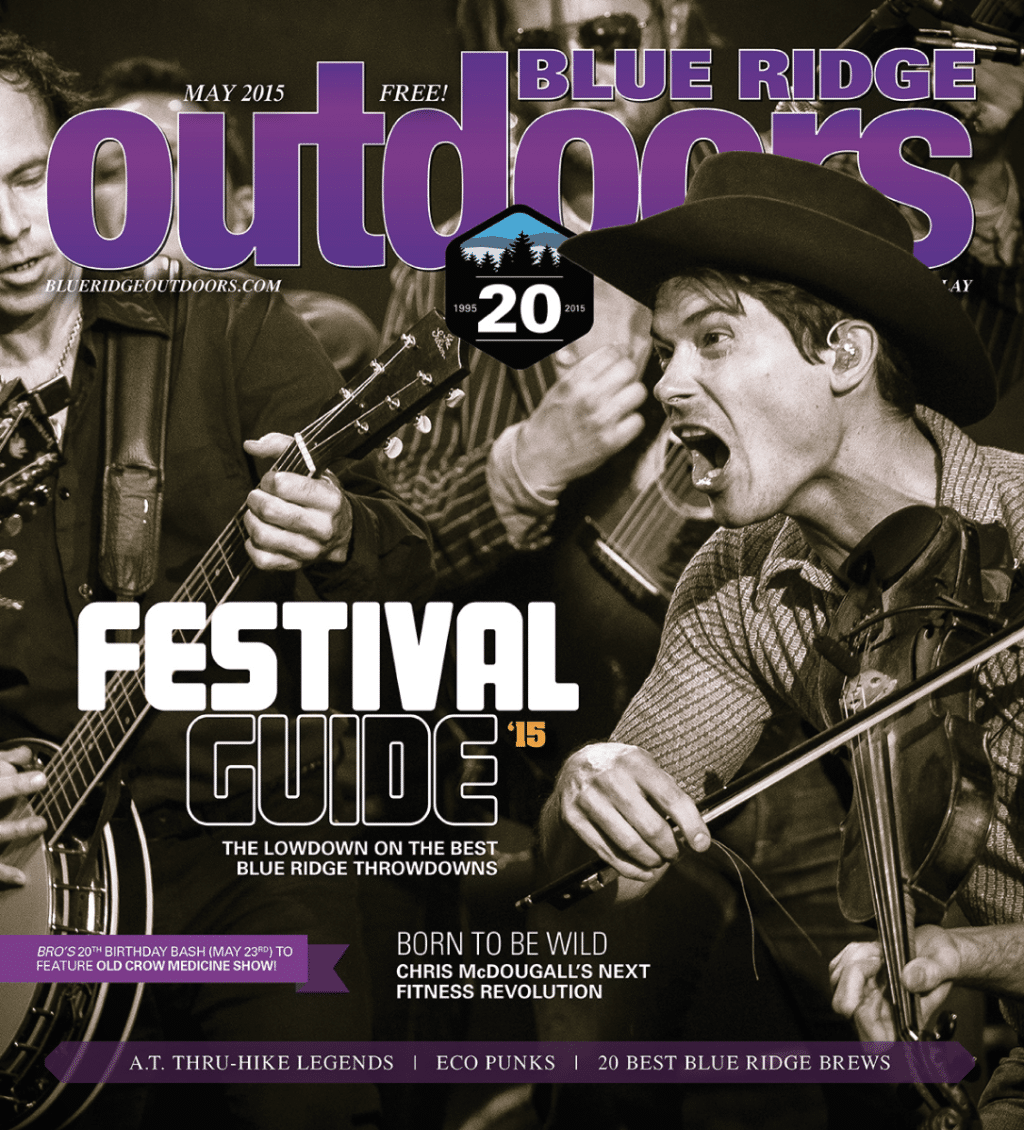
20 Years of BRO with Old Crow
BRO celebrates its 20th anniversary with a big concert at the Sprint Pavilion in the magazine’s hometown of Charlottesville, headlined by roots music heroes Old Crow Medicine Show and the Devil Makes Three. Of his upbringing in Virginia’s Shenandoah Valley, Old Crow’s Ketch Secor tells us: “It’s one of the places in the South where a musical heritage really exists, and that musical heritage can best be exemplified by a fiddle or banjo. For me the Shenandoah Valley is the land of the fiddle tune.”
Bikes and Bourbon
As the magazine continues to expand coverage of the outdoor opportunities in Kentucky, Graham Averill and digital publisher Dusty Allison travel to the Bluegrass State to “Ride Bikes, Drink Bourbon,” as the title of a resulting story in the August issue declares. The adventure includes an 80-mile ride that connects pastoral country roads between Lexington and Louisville and along the way stopping at notable distilleries like Buffalo Trace and Woodford Reserve. “On paper it sounds awesome,” Averill writes. “In reality, it’s even better.”
2016
Here Kitty Kitty
In a widely shared story, Laura Ingles reports on a recent mountain lion sighting in Tennessee and the possibility of more big cats migrating from the West. She writes: “Biologists and wildlife specialists speculate that cougars will reestablish themselves in states like Kentucky, Tennessee, and Virginia within the next 25 to 50 years.”
Insta Overkill
In her takedown of “Outdoor D-Bags” in the December issue, author Rachel Walker has a message for those who overshare outdoor experiences on social media: “Who cares how #blessed you are when you #exploremore and #getoutside? Doing #SUPyoga at sunrise doesn’t make you more #blissed than me. Especially when I see it on your Insta/Twitter/Facebook/Snapchat feed within minutes of said #accomplishment. Instead it’s like #OMFG.”

2017
Solar Boom
Eric J. Wallace—a current BRO contributor—covers the rise of solar energy in the South in the April issue. Among the encouraging revelations in the piece is a report that “solar puts more Americans to work generating electricity than oil, natural gas, and coal combined.”
You Can Do It
“I wanted to show people that if you want to run in whatever body you have, you can do it. It might be slow, it might be painful, but you can do it. And you are entitled to exercise out in public as you are.” —Mirna Valerio, ultrarunner, advocate for inclusion in the running community, and author of A Beautiful Work in Progress, in the July issue.
2018
The Hunt for Eric Rudolph
Current BRO daily news editor Kim Dinan writes an expansive piece detailing the backstory and manhunt of Olympic bomber Eric Rudolph in the mountains of western North Carolina. The chase started in 1998 and didn’t end until Rudolph was apprehended and arrested behind a Save-A-Lot store in Murphy, N.C., in 2003. Writes Dinan, “In the end, the manhunt cost millions and set off a culture clash that reverberated throughout the mountains and beyond.”
Leading Ladies
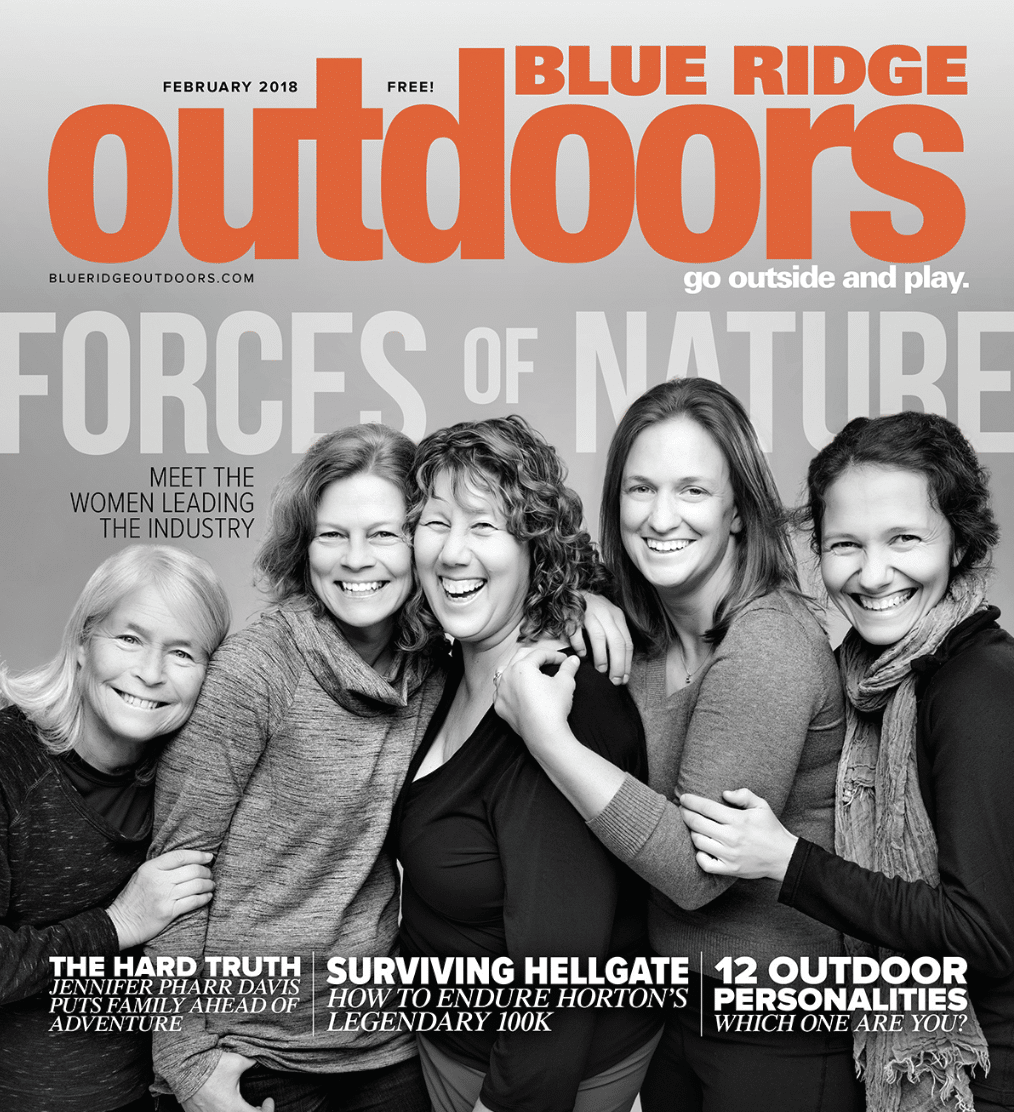
For the February cover story, titled “Forces of Nature,” Jess Daddio profiles seven women leading outdoor industry efforts in adventure and conservation. In the piece, Kathy Zerkle, a National Park Service river ranger and former raft guide says of the latter profession, “It’s a difficult place to be as a woman. I always had to do twice as much twice as well to get the respect for what I was doing.”
2019
Doyle’s Final Thru-Hike
Appalachian Trail legend Warren Doyle talks to BRO about his 18th and final thru-hike in the May issue. He tells correspondent Mason Adams that the trail’s final 100 miles leading to Maine’s Mount Katahdin were the toughest. “I’ve never been so nervous about a hike. I’ve hiked over 38,000 miles of trail. All I had was 100 miles left, and I didn’t know whether I could do it or not.”
Doyle is now focused on helping other hikers at his Appalachian Trail Institute, a folk school in eastern Tennessee.
Race to the Top
In the February issue a round-up of the toughest ultramarathons in the South includes coverage of the iconic Mount Mitchell Challenge. The 40-mile race takes runners to the top of the highest peak on the East Coast. Jay Curwen, current race director and a former BRO contributor, explains the race’s popularity: “We’ve sold it out every year for 21 years. We’ll have anywhere from 1,500 to as many as 2,500 trying to get in for only 200 spots.”
2020
Adventures in Isolation
As the coronavirus pandemic worsens in March, state governors in the Blue Ridge start issuing stay-at-home orders and suddenly access is restricted to beloved destinations like Shenandoah National Park and the Appalachian Trail. In the June issue, travel editor Ellen Kanzinger’s feature story “Adventures in Isolation” covers how the region’s athletes and adventurers find creative ways to stay active outside, including yard campouts and virtual marathons.
